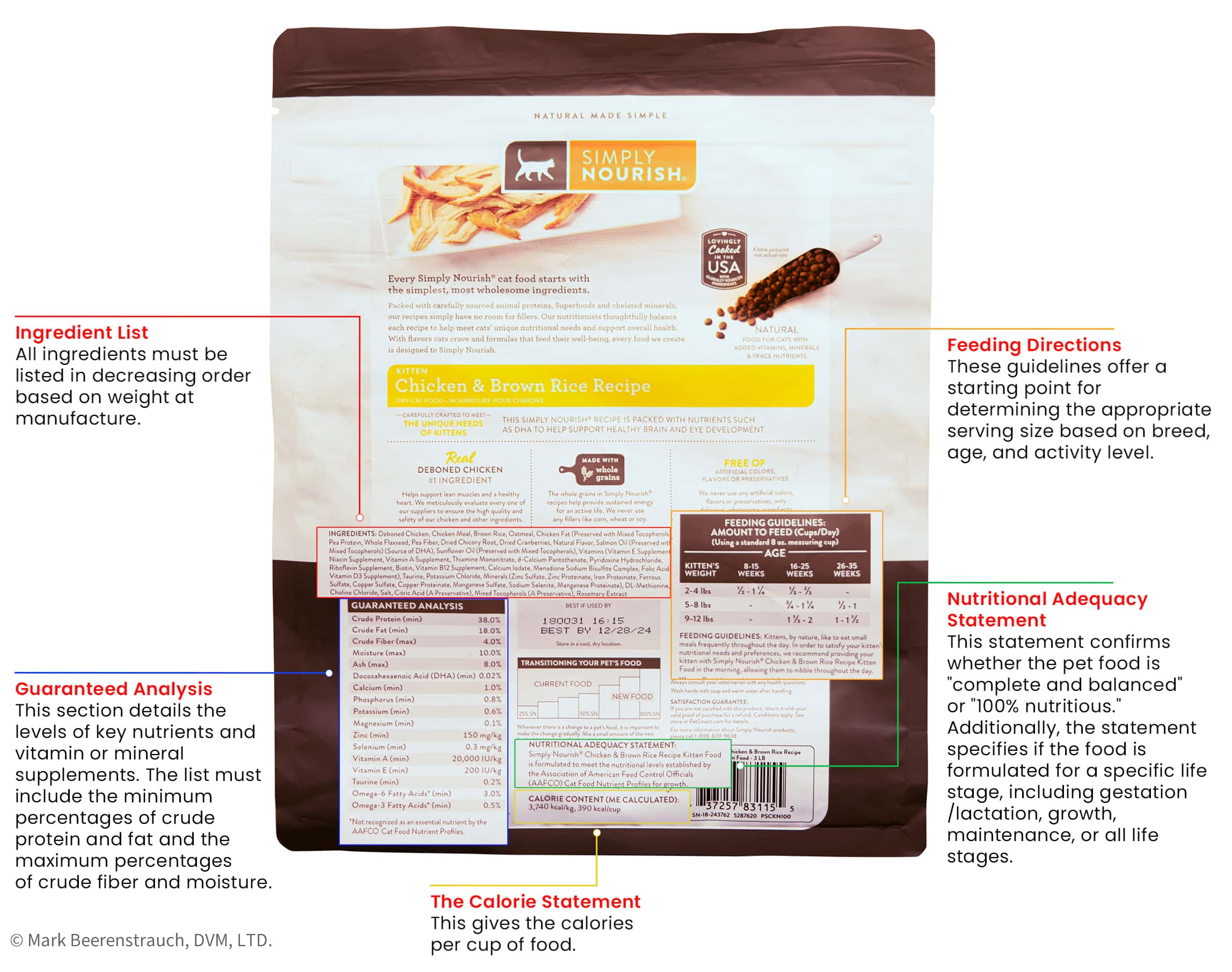Decoding Pet Food Labels: Dr. B’s Guide to Making Informed Choices
Hey there, pet parents! Dr. B here from Pet Health, ready to tackle one of the most confusing aspects of caring for our pets: deciphering pet food labels. You’re not alone if you’ve ever felt overwhelmed standing in the pet food aisle, staring at rows of colorful bags, wondering which is the best choice for your beloved companion. In this blog, I’ll explain the essentials of understanding pet food labels, helping you make informed decisions about what goes into your pet’s bowl. Let’s dive in!
Understanding pet food labels is crucial for ensuring your pet gets the nutrition they need. Rest assured, pet food labels are regulated by both the FDA and AAFCO. The FDA sets federal guidelines for ingredient identification and net quantity statements. At the same time, AAFCO (Association of American Feed Control Officials) establishes specific rules that pet food manufacturers must follow to ensure the quality and safety of your pet’s food.
Before we dive into the nitty-gritty details, let’s address something crucial: the plethora of information plastered on pet food bags. While some are undoubtedly significant, much of it amounts to little more than marketing fluff. I want this blog to focus on the four most critical factors you should consider when scrutinizing pet food labels.
Ingredient List
When deciphering pet food labels, understanding the ingredient list is paramount. The list follows a specific rule: all ingredients must be listed in decreasing order based on weight. It’s crucial to note that the weight of whole meat includes water content, while other ingredients are measured dry. So, what should you be on the lookout for? The same principles apply when selecting food for yourself – prioritize real, wholesome ingredients over artificial additives like coloring or preservatives. Scrutinizing the ingredient list is the first step to ensure your pet receives nourishment from quality sources.
Guaranteed Analysis
Understanding the guaranteed analysis is the next crucial step when deciphering pet food labels. This section provides essential information for pet parents, detailing the levels of key nutrients such as protein, fat, fiber, and moisture. The guaranteed analysis must also specify the amount provided if a product includes vitamin or mineral supplements. It’s essential to note that canned food incorporates water into the guaranteed analysis. For instance, if a dog food label indicates 75% water in the guaranteed analysis, the dry matter content is 25%. This affects the interpretation of other nutrients listed.
Nutritional Adequacy Statement
Understanding the nutritional adequacy statement is my third important step when deciphering pet food labels. This statement confirms whether the pet food is “complete and balanced” or “100% nutritious.” It also indicates if the food does not provide complete nutrition and is not intended to be served as a meal, such as if it’s a topper. Additionally, the statement specifies if the food is formulated for a specific life stage, including gestation/lactation, growth, maintenance, or all life stages. However, it’s crucial to note a particular point regarding foods labeled “All Life Stages.” While marketed for all life stages, these foods are nutritionally equivalent to puppy or kitten food, potentially leading to weight gain in adult pets due to increased calories. Thus, pet parents should exercise caution when selecting food for adult pets labeled as “All Life Stages.”
Feeding Directions
Understanding the feeding directions on pet food labels is my final recommendation. This is an essential step to maintaining your pet’s optimal weight. These guidelines offer a starting point for determining the appropriate serving size based on breed, age, and activity level. However, it’s essential to recognize that each pet has unique nutritional needs, requiring adjustments to the recommended amounts depending on your pet’s weight changes. These amounts often decrease as your pet’s age or activity levels change.
You can make informed decisions about your pet’s diet by understanding the ingredient list, guaranteed analysis, nutritional adequacy statement, and feeding directions. Remember, pet food labels are regulated to provide accurate information, but it’s up to you to decipher what matters most for your pet’s health. With this knowledge, you can confidently navigate the pet food aisle and choose the best options for your beloved companion.





